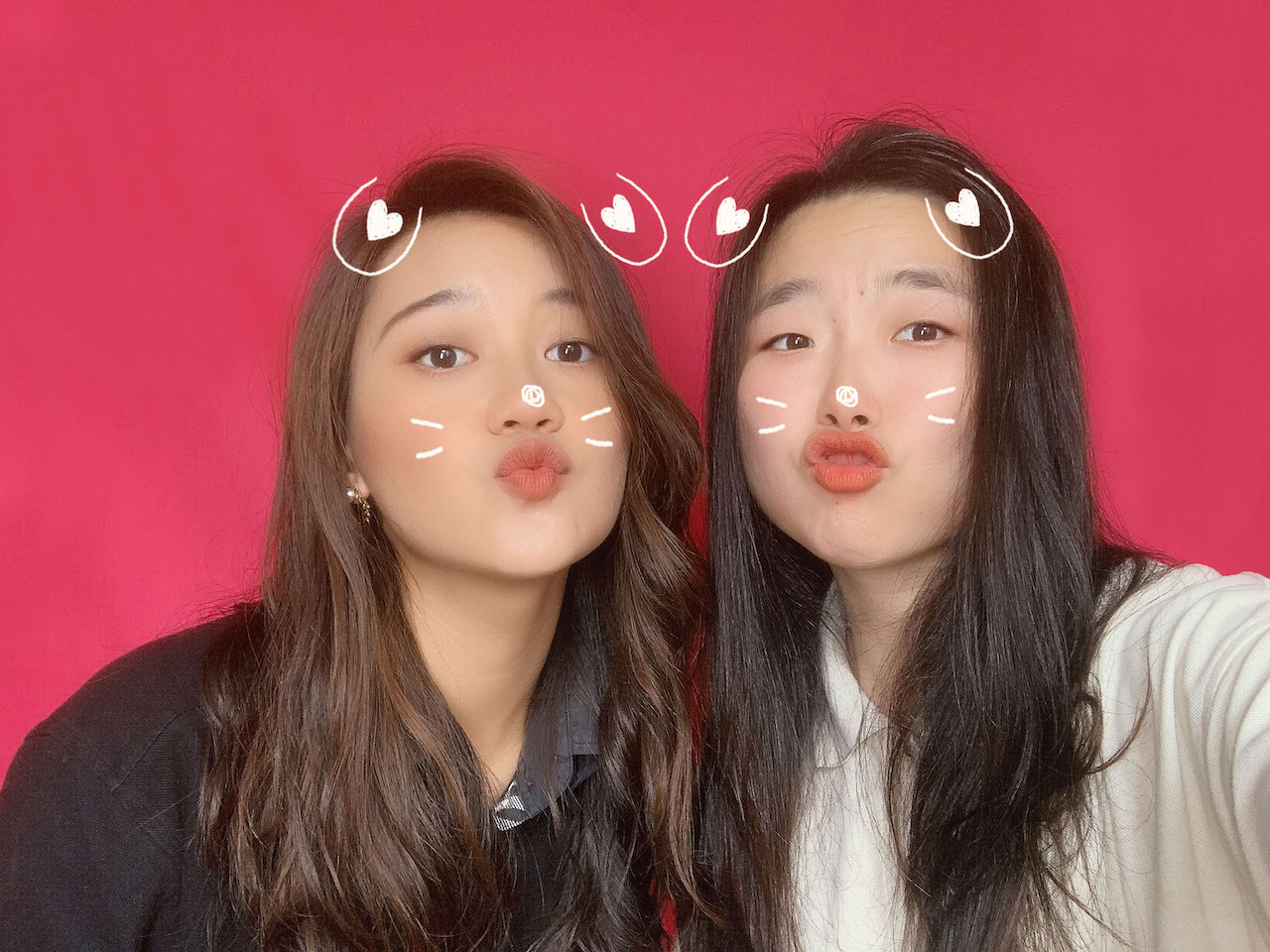You have seen her around in her oversized tees and fluffy slides.
She posts videos of herself dancing in front of her bedroom door, a TikTok superstar in the making. She stngs cigarettes from the neighbourhood korkors and hangs out at the arcade after school. Most of the guys in class think she’s cute and pretty and want her to be their girlfriend.
You don’t know her name, but you know that she is a XMM.
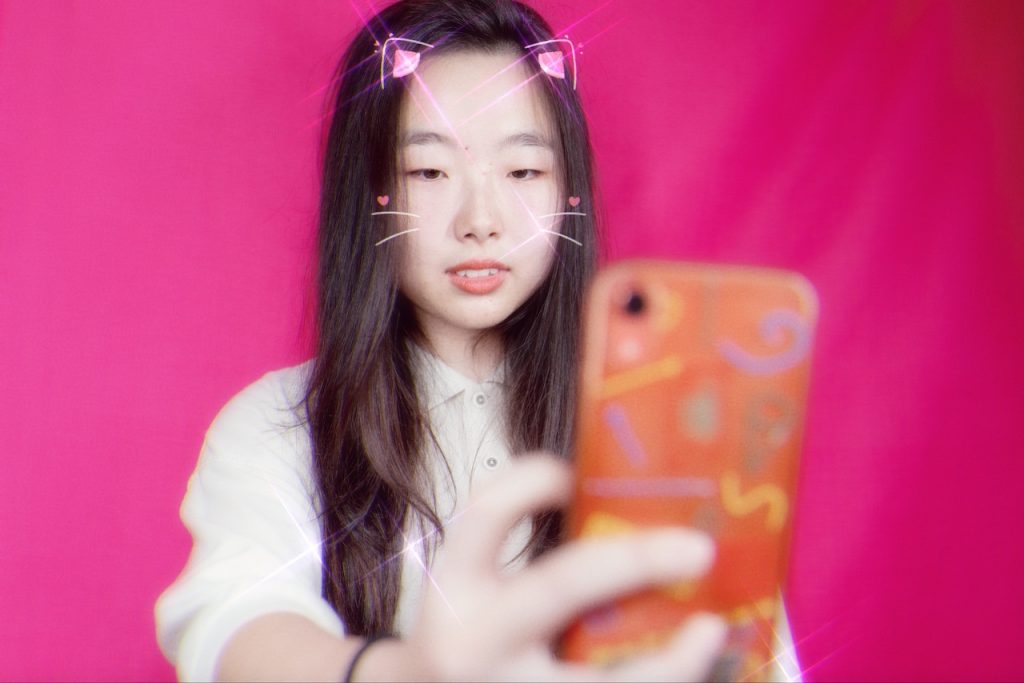
XMM, or ‘xiao mei mei’, means ‘little sister’ or ‘little girl’ in Mandarin. Urban Dictionary defines XMM as a girl around the ages of 12 to 15 who smokes Viceroy Hokkaido Mint, dates someone older than her, and posts videos on TikTok. Low SES XMMs ride e-scooters whereas high SES XMMs can afford the luxury of Grab.
A quick look at Singaporean meme pages concurs with these characteristics, and even adds more:

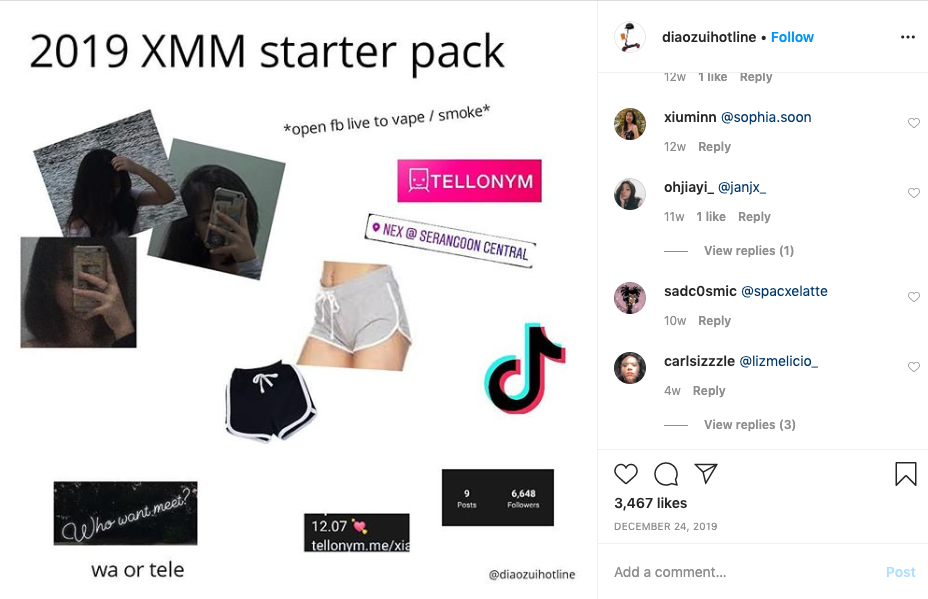
Aside from physical and behavioural characteristics, people also pinpoint personality traits as defining features of XMMs.
“I think what truly makes a xiao mei mei,” Xiang Min, 21, who admits that she used to be a XMM in her junior college days, “is an underdeveloped sense of self.”
The XMM, it seems, is at least partially defined by a state of mind. Someone who is a little less mature, a little more naive. She is compliant and malleable, eager to please, and constantly seeking approval. In the end, these traits manifest themselves in her appearance—her clothes, her hairstyle—and her behaviours.
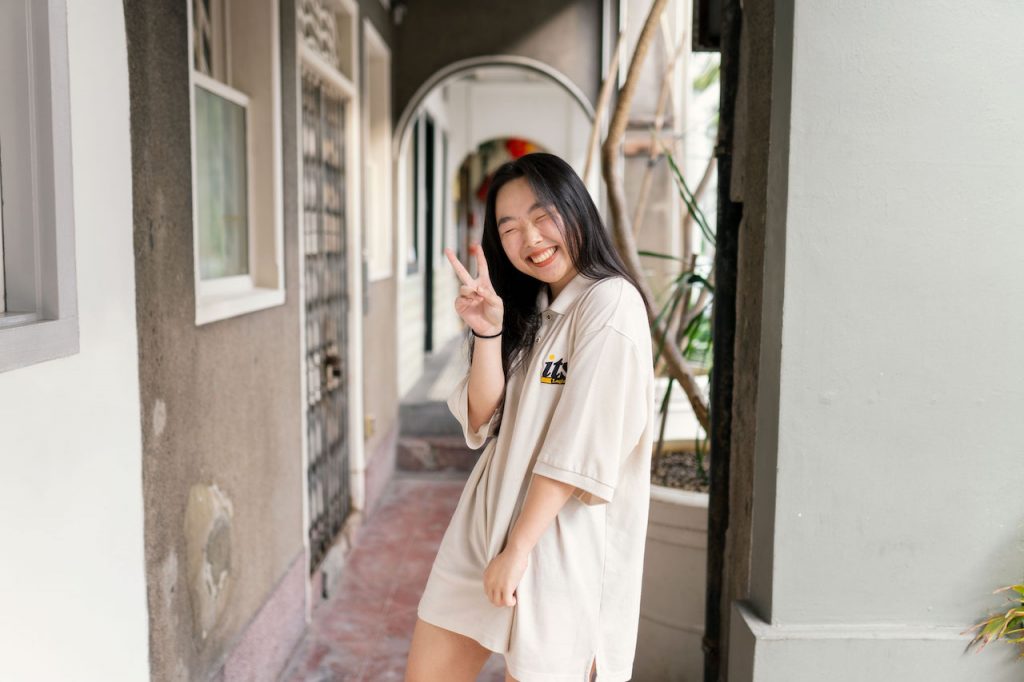
Most pages like these make a quick disclaimer: they just like pretty girls and, honest to god, it’s all just for entertainment.
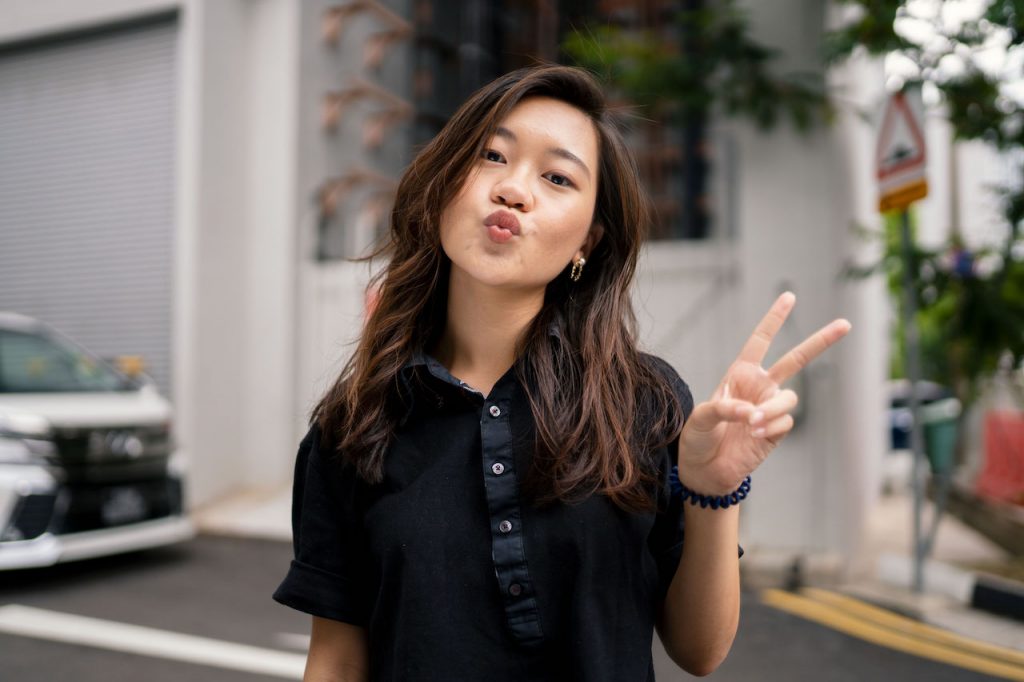
But Instagram pages are merely a blurry reflection of XMMs. To understand XMMs, we have to go straight to the source and dive into the world of TikTok.
Almost every single person associated the XMM with TikTok, and it’s not hard to see why. The hashtag #xmm has 4 million views on the platform.
“Maybe it appeals to certain guys? The whole cute girl thing.”
The fact that videos like these are often reposted on Instagram for ‘entertainment’ or ‘showcase’ purposes says something about what kind of girl is considered ideal.
Some people repost photos and videos of XMMs with captions like ‘cute’ or ‘pretty’, but others are not so innocent. Tumblr blogs that hypersexualise XMMs still exist. Despite the shutdown of the nefarious SG Nasi Lemak Telegram chat, other group chats like SG XMM live on, sharing pictures of adolescent and teenage girls.
“It’s pretty nasty, especially since most of the audience [of] such content are older men. I guess I feel angry as a female ‘cause no female should be sexualised or have their own pictures posted without their consent,” Christabel, 19, says.
“I’ve had a couple of friends that experienced this back in secondary school, whereby pictures which were all appropriate were taken from their Instagram profiles and posted on to Tumblr with really sexualised captions.”
The XMM is desirable to the point of fetishisation. There are even people out there who specifically seek out XMMs for romantic or sexual favours.
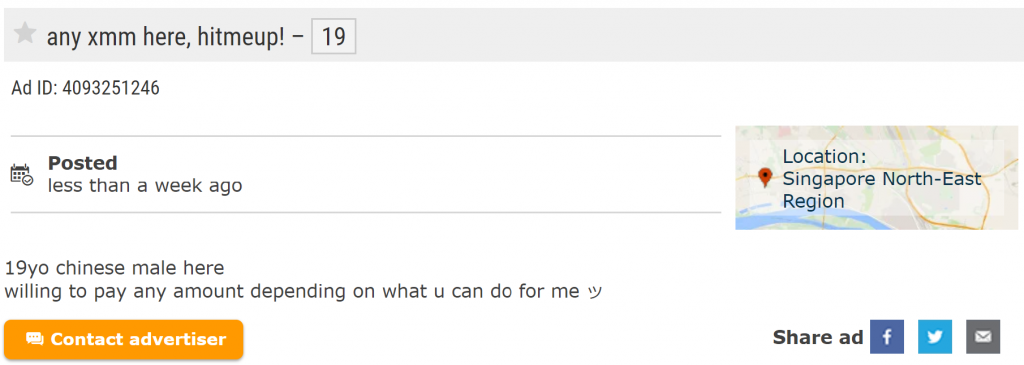
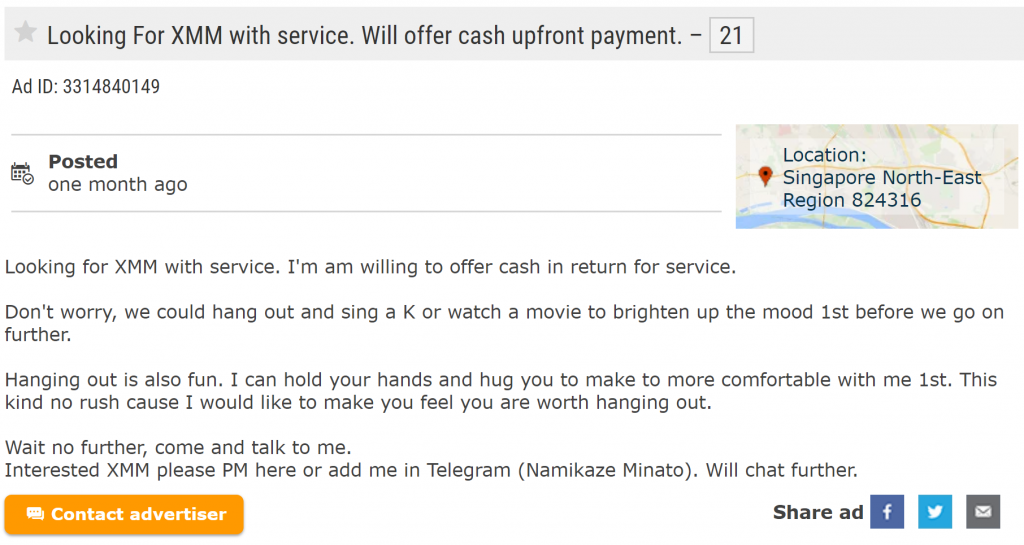
XMMs are chio, pretty, cute, slim. They are young and innocent, impressionable and naive.
When asked whether he thinks most people find XMMs attractive, Javier, whose girlfriend he claims is a XMM, says, “I think many people do, especially guys in their 18 to 20s. I guess people think they’re cute or bubbly.”
“I know for a fact that some guys are into it,” Xiang Min asserts. “Some guys like the naïveté and cuteness, and they see themselves as a protector.”
Ideas like these—cuteness, naivety, innocence, and so on—pop up frequently when broaching the topic of attractiveness. XMMs are characterised as physically small and fragile, calling for others to take care of them. Their personality, too, is pliant and submissive, unlikely to say no, and they long for a protector to dote on them.
“Maybe it appeals to certain guys?” Shannon, 17, contemplates. “The whole cute girl thing.”
Maybe, then, this is the ideal that is mirrored when we joke around about the DGG (‘da ge ge’, or big brother) and XMM on an e-scooter together, zooming past canals at unreasonable speeds. The XMM is weak and the DGG is strong; the XMM is to be protected and the DGG is the protector; the XMM is the ideal, fragile female and the DGG is the ideal, alpha male. Guys want to be the DGG and girls want to be the XMM.
“I’ve had a couple of friends that experienced this back in secondary school, whereby pictures which were all appropriate were taken from their Instagram profiles and posted on to Tumblr with really sexualised captions.”
“Personally, I feel like [there is] this negative connotation,” she says. “I associate it with people looking down on me and thinking I’m not capable.”
Similarly, Christabel also has a negative impression of being treated as a XMM. “I think most XMM are seen as immature and annoying.”
Like our beloved ‘ah lian’, female counterpart to the ‘ah beng’, people don’t seem to like the XMM very much. XMMs are described as naive, cringy, and immature. Ah lians are crude and uncouth, dress and speak badly, and are low class.
The ah lian has been around for a longer time than the XMM, but her social media presence is not nearly as strong. XMMs reign supreme over TikTok whereas ah lians have marked the kopitiam as their territory. Both are ideas that we have constructed about what people are like based on how they present themselves in the public eye. Some self-proclaimed XMMs have even capitalised on these fixations, resulting in unsettling situations like this:
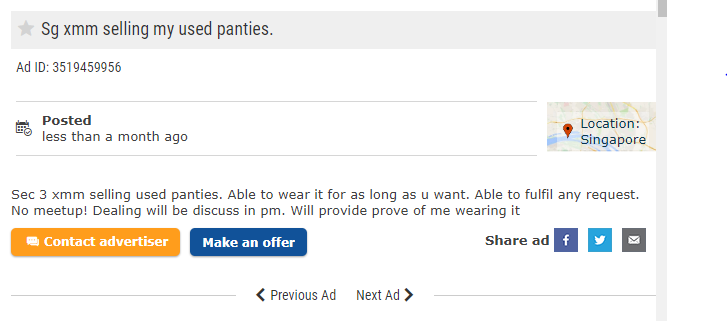

There’s a reason why the XMM is characterised as someone young—because they are. Behind that dance challenge and eye-enlarging filter is a teenager still in the process of growing up.
“I think a lot of it comes with age,” Xiang Min notes, when asked how to ‘evolve’ out of the XMM phase. “But mostly by being comfortable with yourself, focusing more on internal validation than external. Basically maturity.”
In the end, the XMM is a stereotype. She is a checklist of characteristics that has been awarded prominence because of the rise of Instagram and TikTok, avenues where people can selectively show parts of themselves and their lives to the world.

Everyone goes through that stage in life where they’re just trying their hardest to figure out who they are and who they want to be. It might just be the case that in this age of social media, some girls are tacked on with the label of XMM and their videos and photos are spread across Telegram chats and Tumblr blogs. Maybe the XMM has always been around, but she just never had a name nor an Urban Dictionary entry until recently.

